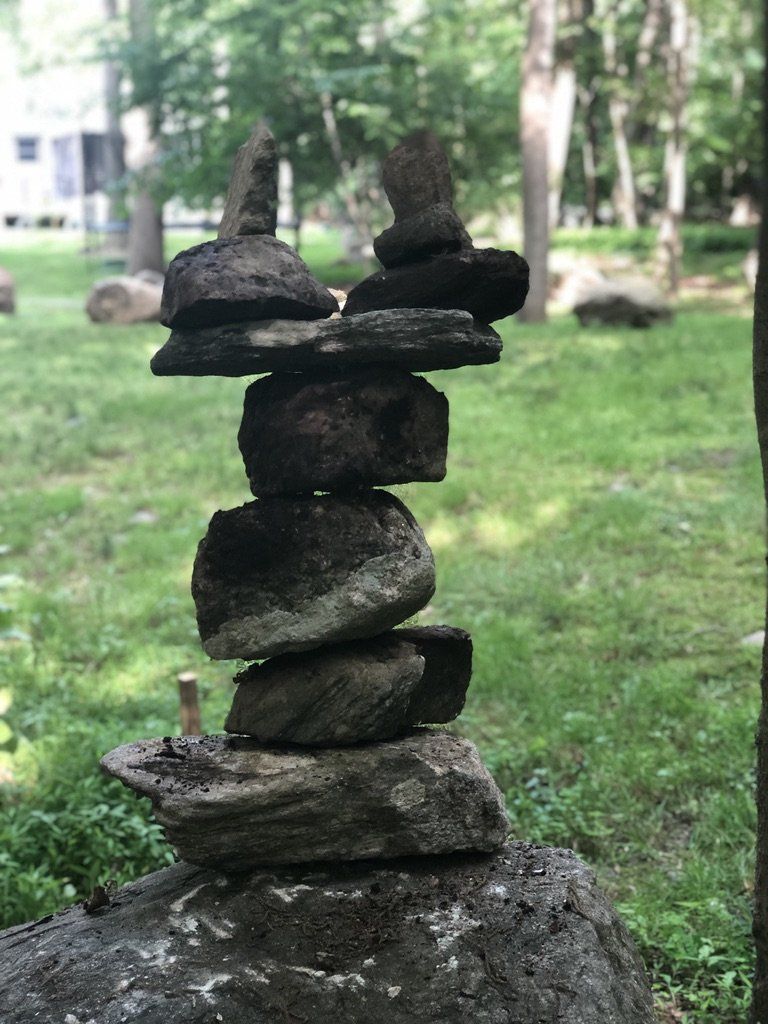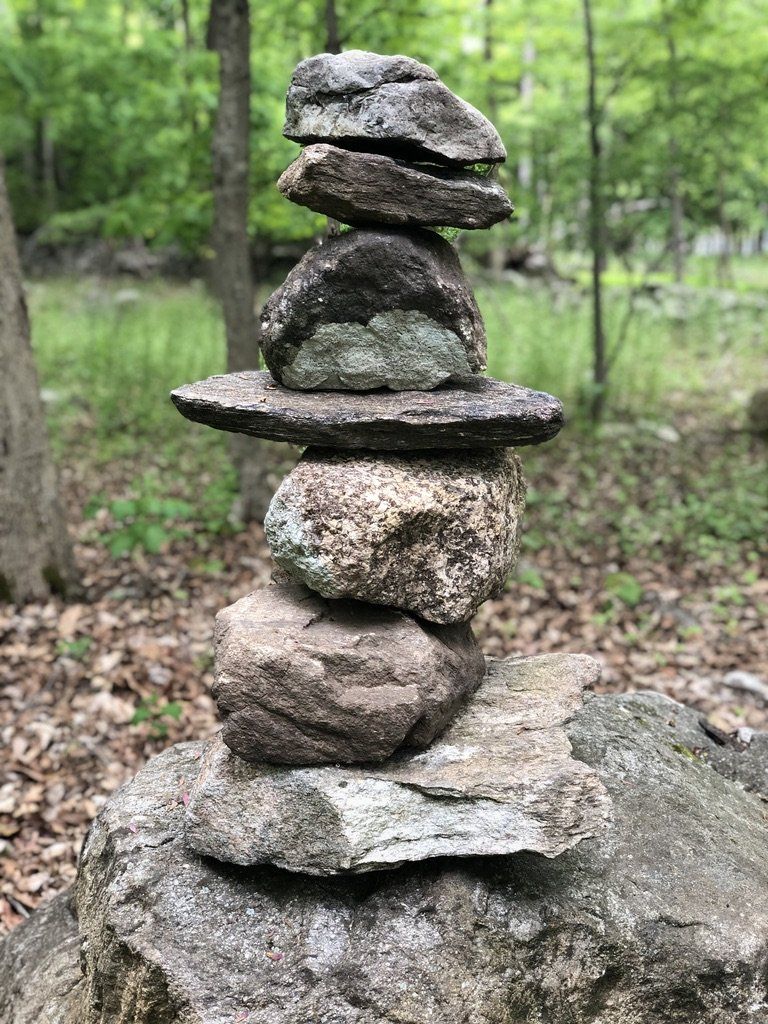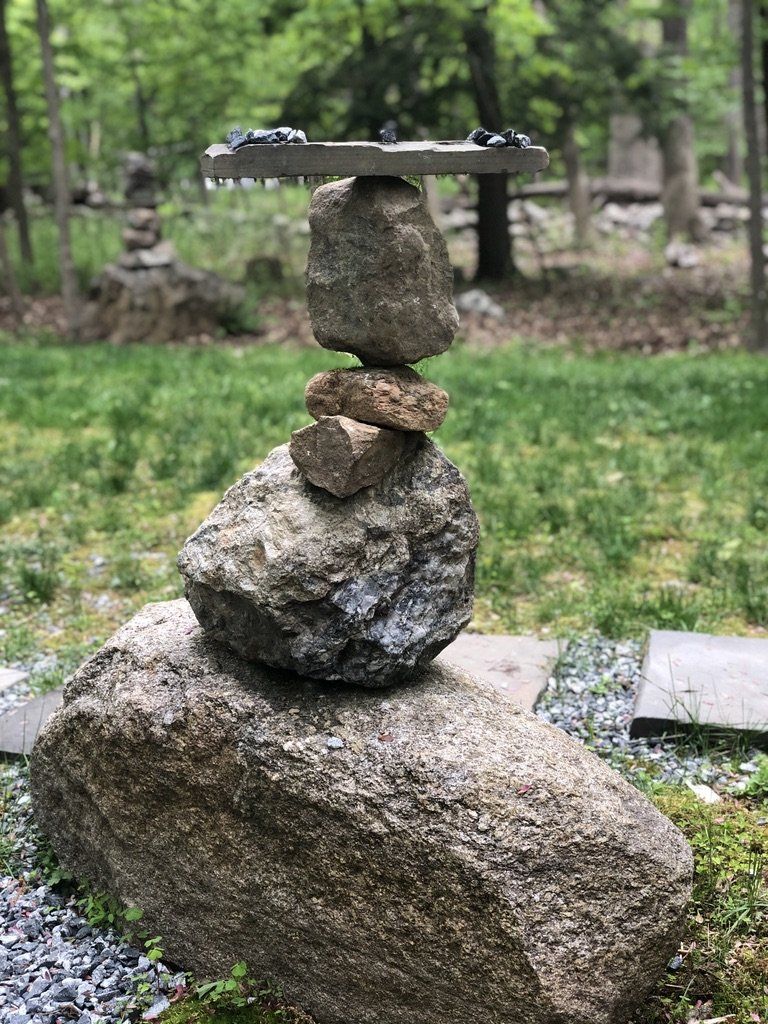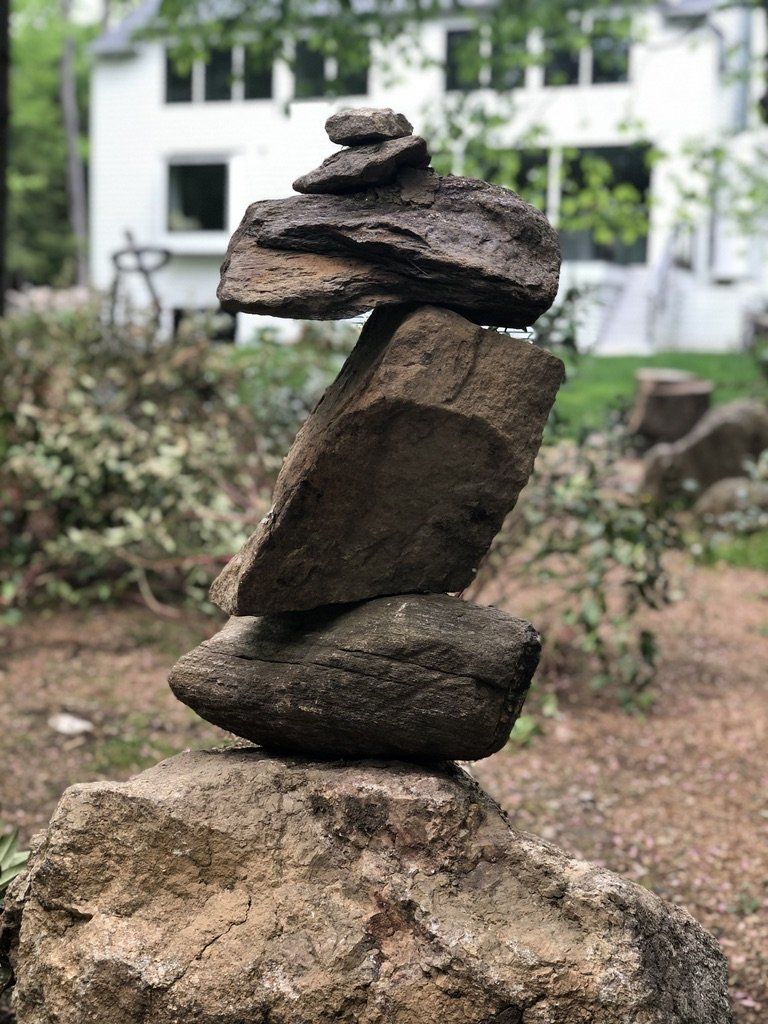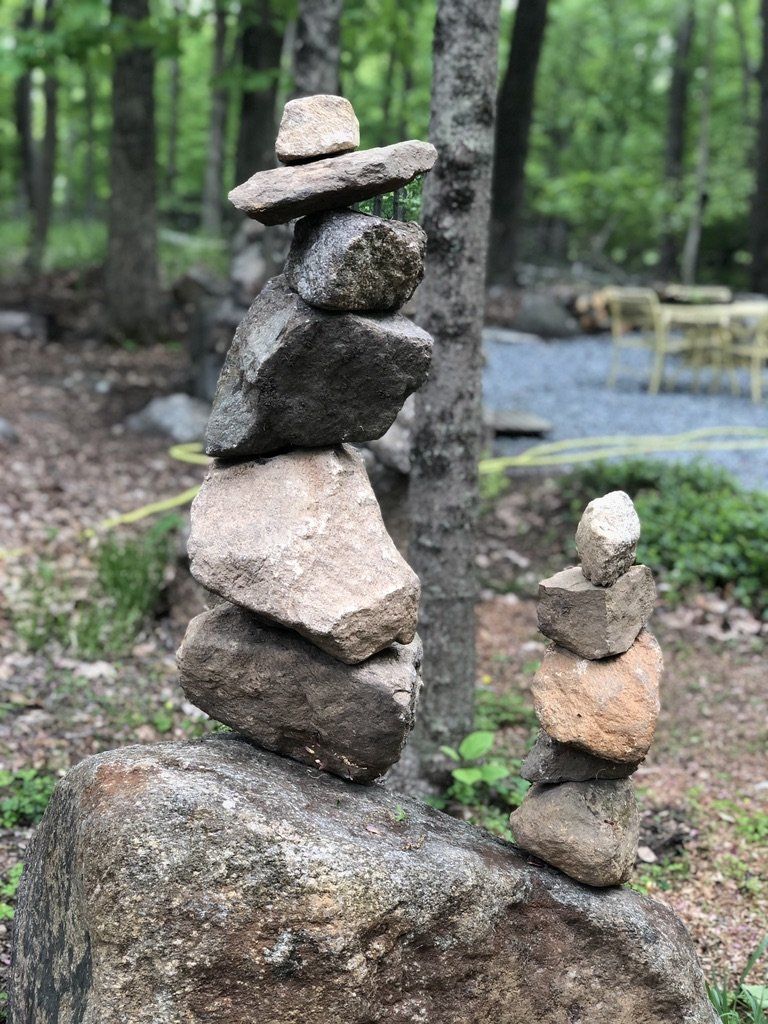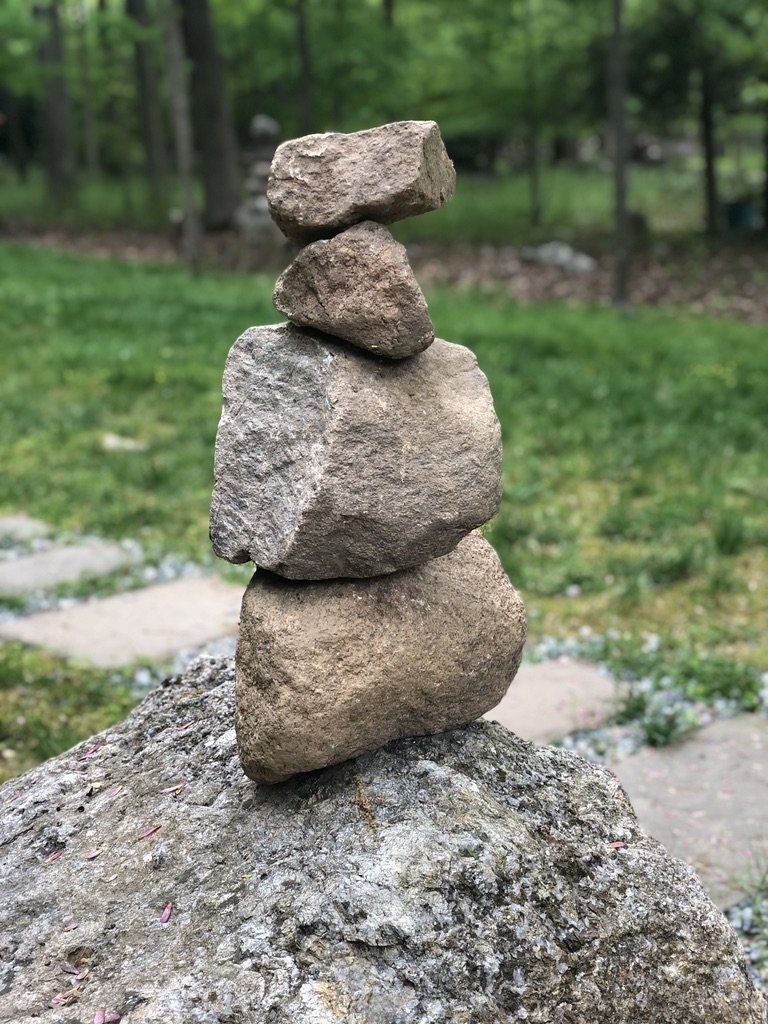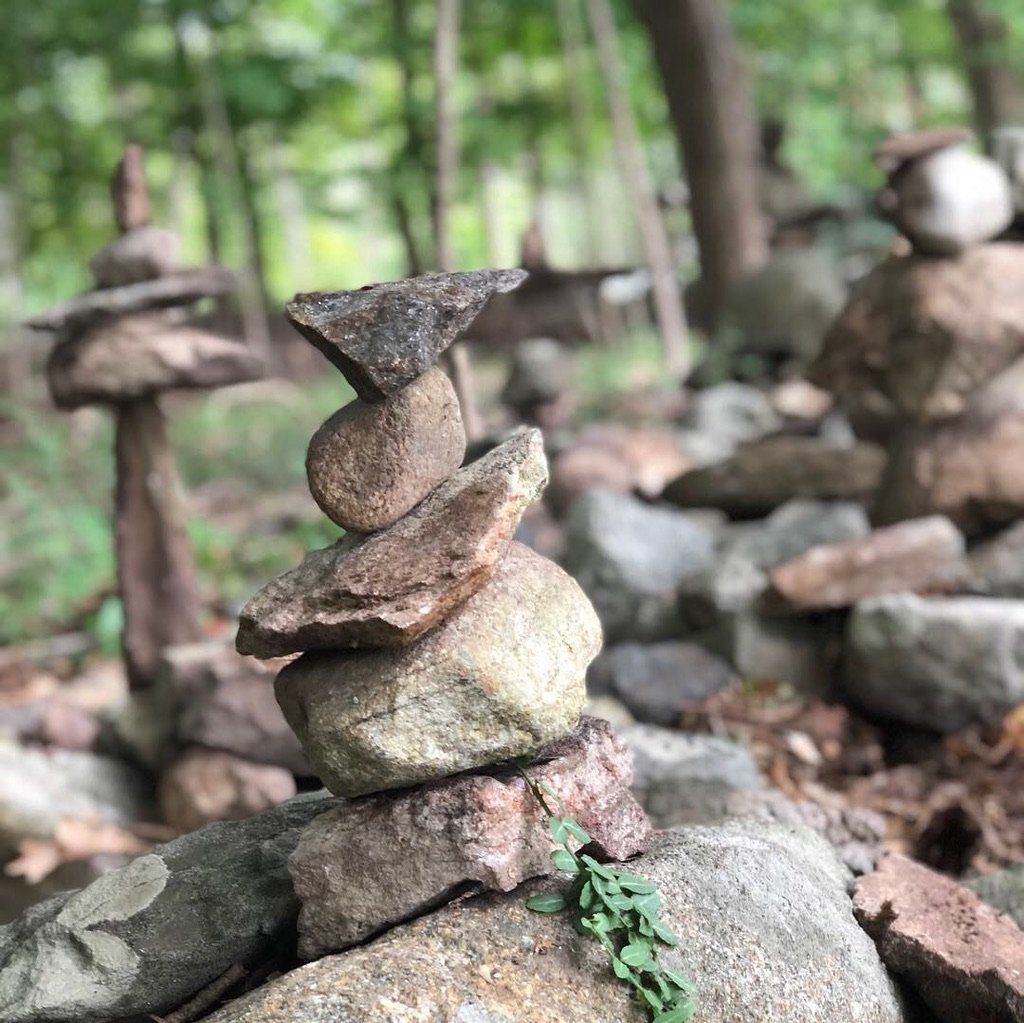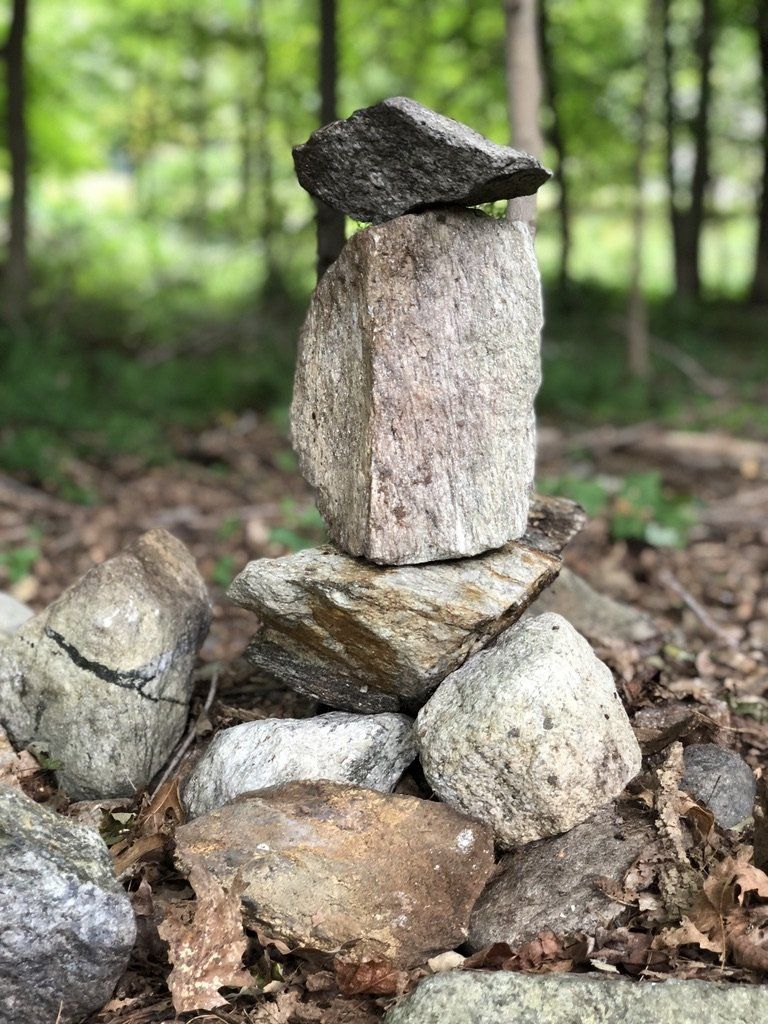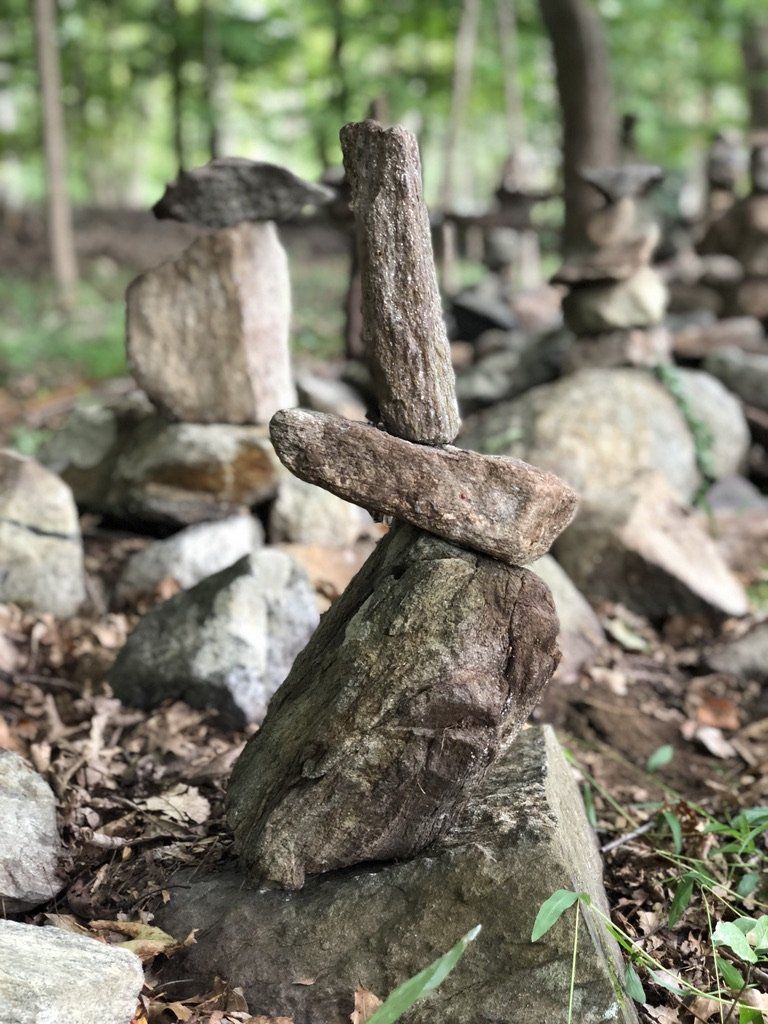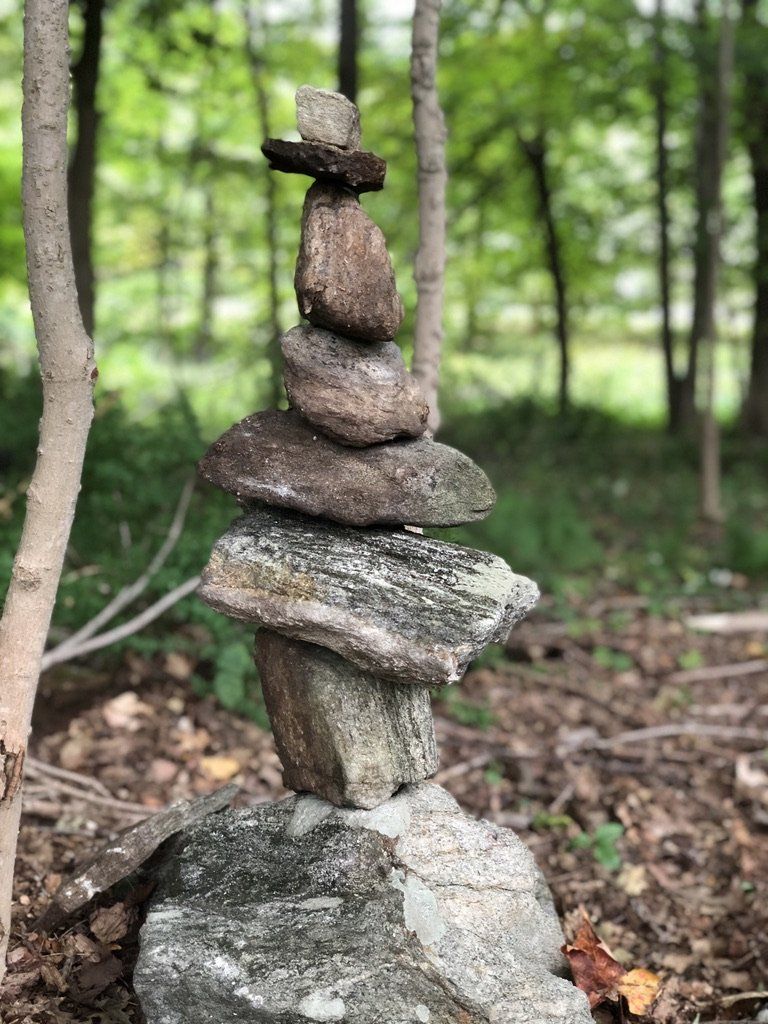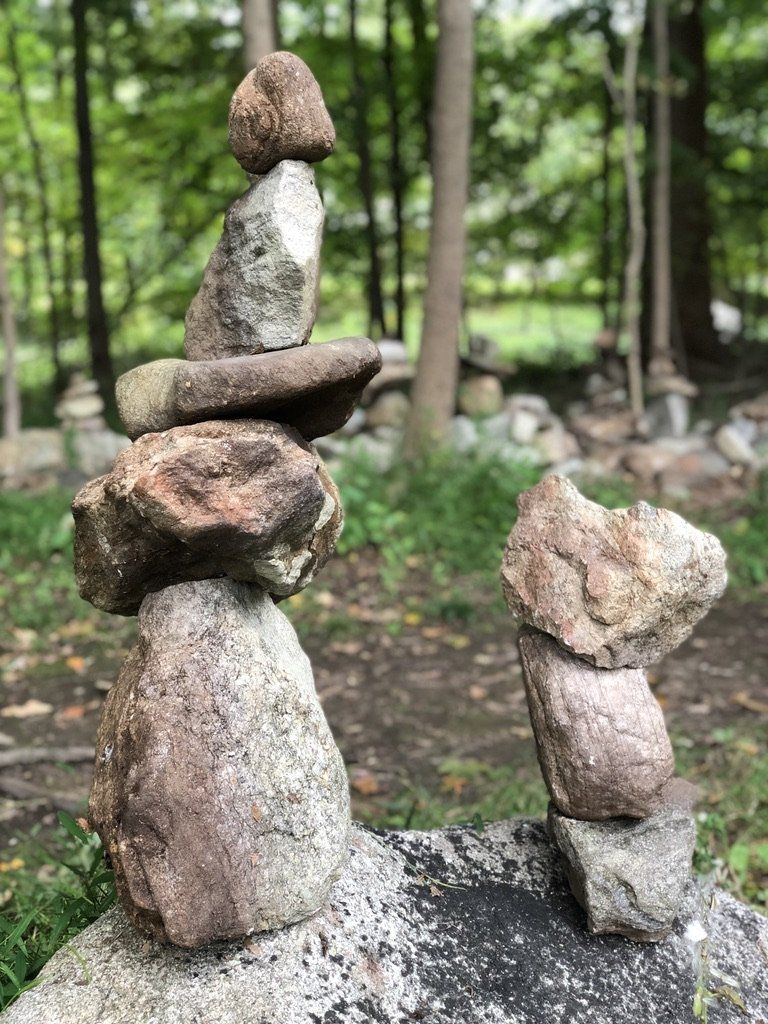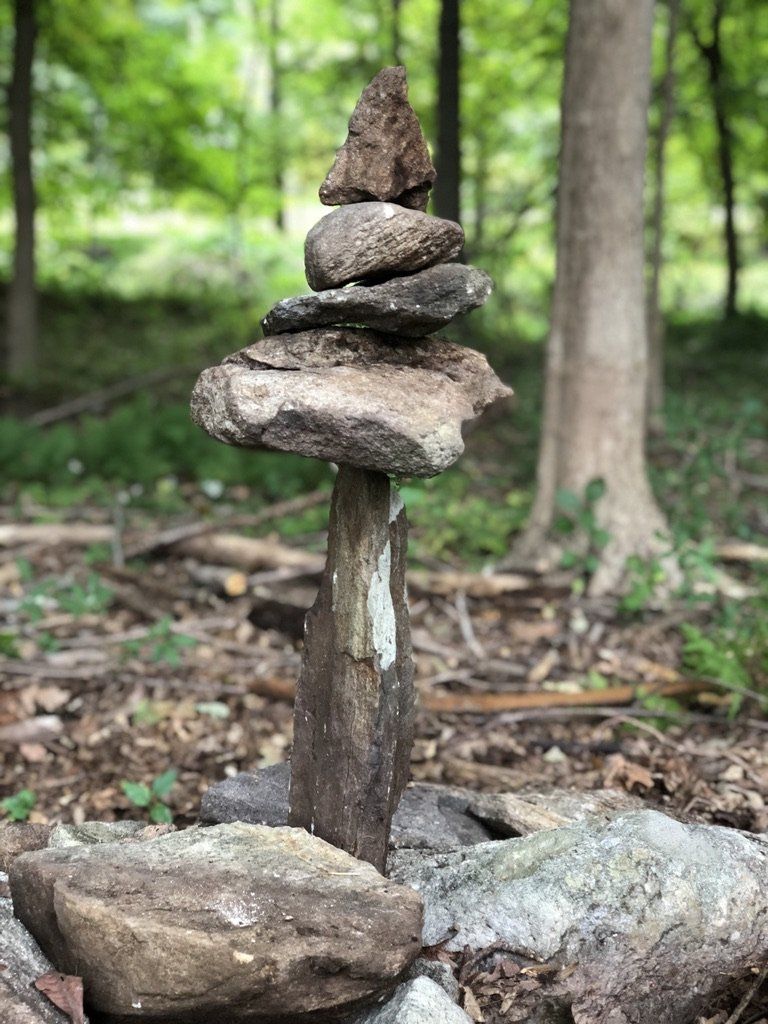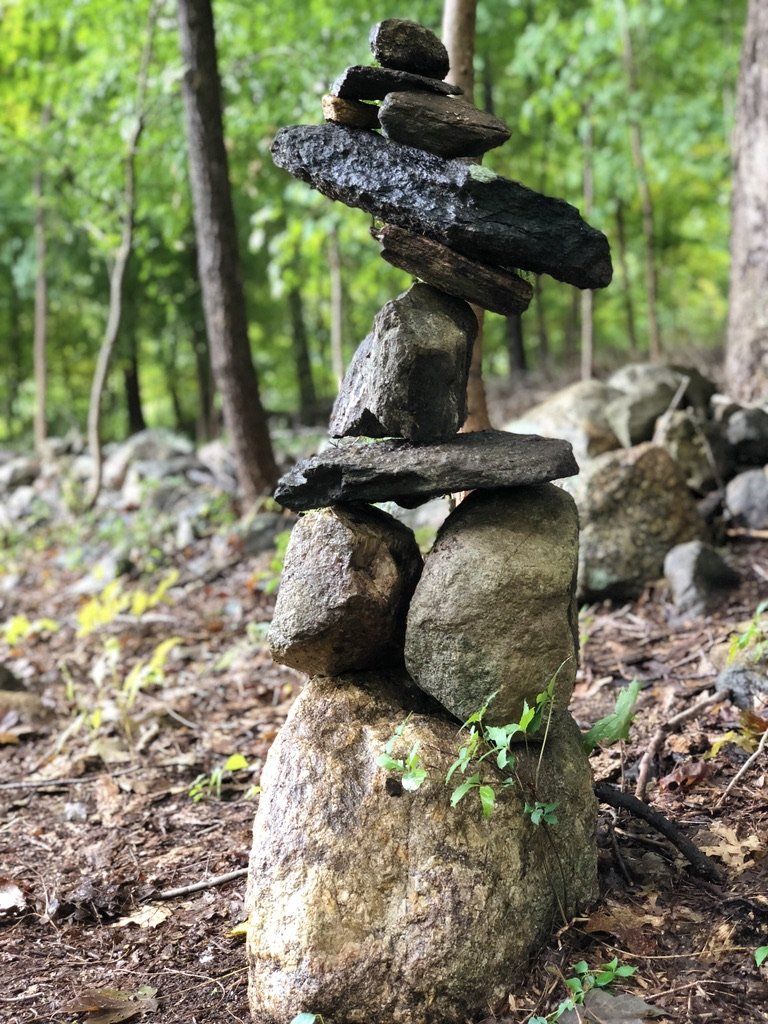BALANCE
Art Impermanence
2020 marks my third season creating stone balance sculptures.
The Journey begins
As I explore the world of stone balancing, an art form as old as Stonehenge, I discover it is as much about my inner psyche as it is about the stones themselves. Balancing stones requires something everyone
has, but most people don't want to use...patience.
The exercise started during a hike at the Newman Poses Preserve in Westport, Connecticut. As a Trail Steward, it is my job to make sure the trails stay hike-able and natural looking. Along the preserve's entry path is an old dilapidated fieldstone wall, commonly found in New England. Since the wall was no longer being used as a property divider, I decided to create some interesting forms along the wall to surprise hikers, but still maintain the feeling of a nature in its purest form.
One stack became many. Over the course of days and weeks I eventually had a veritable stone garden. I noticed on occasion stone stacks would pop up that were not of my creation. It was fun to know I had created a community playground for stone art.
The impermanence paradox of the sculptures is fascinating. The stacks are peaceful and still yet containing so much potential energy. The rocks as old as the very hills they lay on, and yet the forms themselves are so fragile that they might not last the hour, let alone the season.
Two approaches
The basic approach is a more straight forward technique. As I place each stone, I identify that perfect rotation and position, where it doesn't wobble; the perfect placement where it balances and is relatively stable. Through trial and error, I find pairs of stones that just 'click' together. Like they were made for each other. I continue this procedure as I place As I place each successive stone, As I continue this procedure, the stack grows. Each stone finds balance and its center on the stone below it.
The advanced approach requires more forward thinking when placing the stones. A lower stone might be purposely placed out of balance, (but still in a position that offers some sort of "lock"), requiring the weight of stone(s) above it to bring it back into its own balance.
Brick layers use a similar approach when they are constructing archways where the "keystone" actually holds the semi-circle shape together.
Often the safety of observers and passersby dictates when a form is complete, although the larger stones have more visual impact.
Beyond balancing I explore the contrast of shapes, sizes, colors and textures.
Vision of a larger installation
I hope to find a public space where I can more formally present a balanced stone zen garden. Somewhere they can be respected and observed; added to but not destroyed.

